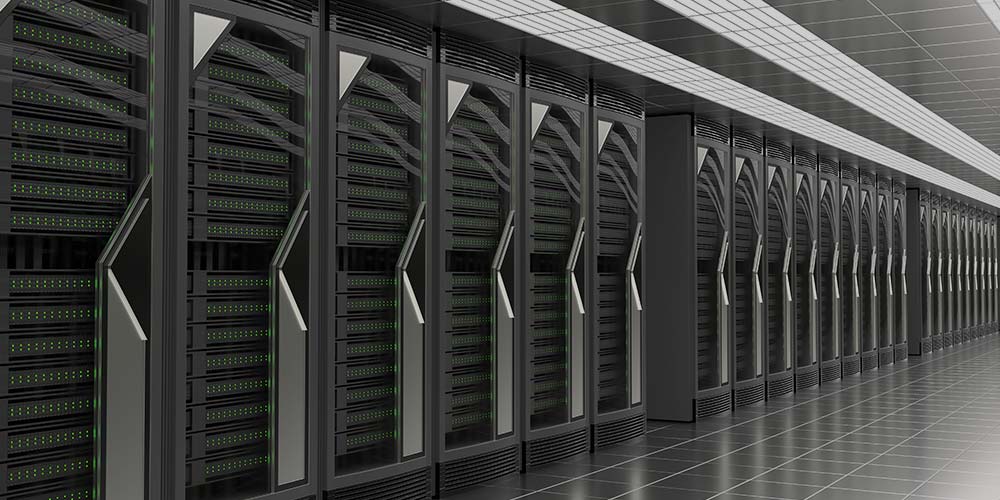Understanding Power Modules: Design Principles, Specifications, Applications, and Our Recommendations

Power module plays a critical role in contemporary electronic systems, offering stable and efficient power conversion across a broad spectrum of applications. In this article, we will explore the design principles, specifications, and applications of the power module, and conclude with our top power module recommendation from FSP.
Design Principles
A power module is essentially a compact power supply that integrates power semiconductors (like GANs or SiCs), control circuitry (digital or analog), and passive components (such as inductors, transformers, and capacitors) into a single package. Here are some fundamental design principles:
Integration:
Power module integrates multiple components, diminishing the necessity for external circuitry. This streamlines system design and management, enhancing reliability, EMC compliance, and system flexibility.
Efficiency:
Efficient power conversion is crucial. An excellent module design minimizes switching and conduction losses, delivering high efficiency across various load conditions. It should comply with the latest energy-saving standards and test criteria, such as the 80PLUS® efficiency standard or EU energy efficiency requirements.
Thermal Management:
Ensuring effective thermal design is important when a power module is installed within a system that operates within safety limits and diverse industrial environments. Typically, the module operates from -40°C to 70°C, with a derating curve or additional airflow. Efficient power topologies and component derating guidelines are key to effective thermal management.
Protection Features:
A power module incorporates protection features like overcurrent, overvoltage, and overtemperature protection to prevent damage to the module and connected system components.
Parallel Operation:
If a redundancy design is incorporated in the module, it should include Oring devices and circuits to support modules running in parallel. Parallel operation enhances system availability, reliability, and increases power output. This feature is particularly important for mission-critical applications, such as AI servers for training or inference.
Digital Communication:
The power module should be able to co-work and communicate with the system, allowing the module to be monitored and controlled as a key component in the system managed by the system board management controller (BMC) and its communication protocol.
Digital Control:
As an extended feature of digital communication, the power module should be prepared to accept commands from system management and respond with results and related activities. For instance, a fan in the PSU can be controlled based on thermal requirements from the system, or a higher power output can be provided due to system peak loading.
Easy Installation:
A power module should be easily inserted and extracted, or secured with just a few screws. This facilitates system maintenance post-sales.
Specifications
Let’s examine the key specifications of power modules:
Voltage Rating:
Power modules operate at specific voltage levels (e.g., 12V, 24V, or 48V). The voltage rating determines their compatibility with different applications.
Current Rating:
The maximum current a module can handle. Higher current ratings are suitable for servers, AI or graphical applications, and industrial equipment.
Failure Alarm:
Monitoring the PSU is more important than ever. Failures should be alarmed and recorded in the PSU black box or system. There are two ways to alarm: analog with TTL signals, and digital status bit recognition.
Efficiency:
Typically expressed as a percentage, efficiency indicates how well the module converts input power to output power.
Isolation:
Some power modules offer galvanic isolation between input and output. This is crucial for safety and noise immunity.
Mechanical Dimension:
When defining a design spec of a power module, the mechanical requirements are actually the first topic we have to define. It relates to marketing application, up-to-date technology, and system consideration.
Applications
Power modules find applications in various fields:
Servers:
In server systems, power modules are used to ensure reliable and efficient power supply. They are particularly important in high-performance servers where power efficiency and reliability are critical.
Data Centers:
Power modules are used in data center equipment. They help to improve energy efficiency, which is a key concern in data centers due to the high amount of power they consume. Also, as previously mentioned, a power module should support power monitoring via digital communication.
Telecom Equipment:
Power modules step up or down voltage levels in telecom, especially in power base stations, routers, and network switches.
Industrial Applications:
Power modules are perfectly suited for industrial automation, edge computing, and mission-critical equipment due to their mechanical size, digital monitoring, and power redundancy.
FSP Recommendation
FSP’s CRPS (Common Redundant Power Supply) is a typical power module designed for various applications such as Edge Servers, Core Data Centers, and AI Centers. Here are some specific models and their corresponding applications:
FN Series:
This model is designed for the telecom market. It features AC full range and 240Vdc input, and is NEBS Ready. NEBS is a common standard of telecom equipment, featuring system high reliability and high level EMC performance.
FL Series:
This model is also designed for the telecom market. It features -48V input and both Front End and Back End designs (Fan blow in or out).
FM, or HM Series:
This model is designed for Core Data Centers and Cloud Data Centers. It features AC full range and 240Vdc input, and both front end and back end designs (Fan blow in or out). It has a uniform factor up to 3000W, and 3250W module is on the way to launch soon.
FH Series:
This model is designed for Core Data Centers and Cloud Data Centers. It features 336Vdc or 277Vac input and meets new Data Center requirements.
These models are designed to meet the design principles of power modules as mentioned above, such as high efficiency, digital communication bus, and parallel operation with hot-plug feature. FSP offers power modules ranging from 300W to 3000W. They are ideal for various applications including Storage Server, Edge Server, Data Center, AI Server, GPU Server, IPC Controller, and Telecom Server. The choice of model depends on the specific system deployment requirements.
Conclusion
Power modules are essential components in modern electronics. Their compact design, high efficiency, and digital features make them ideal for various applications. As technology advances, power modules will continue to play a crucial role in shaping our connected world.
Remember to choose power modules that meet your specific requirements, considering voltage, current, efficiency, and digital features. Please visit FSP’s website at https://www.fsp-group.com/en/product/IPCPSU.html to learn more about the mechanical and functional specifications of FSP CRPS, the industry’s best power module solution.
Related Articles
About FSP
FSP Group is one of the global leading power supply manufacturer. Since 1993, FSP Group has followed the management conception “service, profession, and innovation” to fulfill its responsibilities as a green energy resolution supplier.




